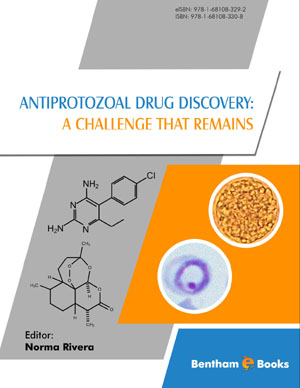Abstract
The success of Anti-infective agents (AIAs) is determined by the interaction between a drug and the binding sites. Significant contributions have been made to the synthetic and dynamic relationship between drugs and pharmacodynamics for the past few years. In general, AIAs include antibacterial, antiviral, antifungal, and antimicrobial agents, etc. The clinical benefit of using anti-infecting agents significantly impacts bloodstream infections with central venous catheters (CVCs), pregnancy, and lactation. Recent reports suggest income from AIGs formed 30.1% of the total income of hospitality management. However, many more technical difficulties remain, such as acquiring biologically relevant chemical diversity and achieving activity across diverse pathogens, including highly challenging Gram-negative pathogens with safe drugs. This chapter reviewed 1,2,4-triazoles, isatin, and coumarinbased anti-infective agent developments from the past five years and their biological studies against the various bacterial strains based on new challenges on viral and bacterial infections and viruses. SAR studies also discussed the importance of hybrids and substitutions in biology. We believe that this chapter helps future researchers to develop the most effective and less toxic anti-infective agents.
Keywords: Anti-infective agents, Coumarin, Isatin, Toxicity, Triazole.






















